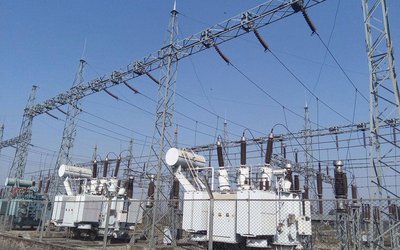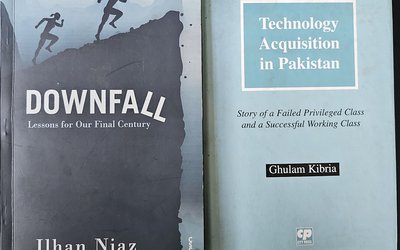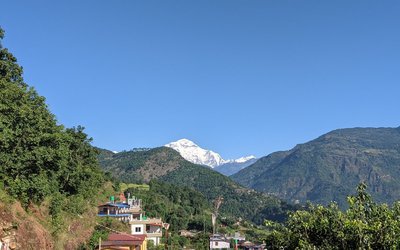The controversy over provincial boundaries of our country might have been easily resolved if the people would have been clearly explained that the detachment from mountain region would be suicidal to Terai. Needless to say that a great majority of our Terai people are completely ignorant of the facts that in immediate future Nepal Terai is in great danger of being frequently hit by extreme draughts and catastrophic floods. Apart from future economic survival even the physical existence of a vast region of Nepal Terai would be at great risk.
Nepal Terai would soon going to be completely dependent on adequate planning and implementation of water resources projects to be located deep inside hilly region far away from the Terai. Unfortunately such projects would have to be implemented at a great economic loss to the people of the mountain region. On top of it these types of projects would have disastrous environmental consequences for the people of hills.
Depletion of Terai Water
Abundant water diverted from the hill into Terai particularly in dry season is nothing less than nectar for Terai lands year by year suffering from constantly growing shortages of water critically needed to meet the irrigation requirement of Terai. These are the finding of vast studies already carried out by various reputed international agencies and donor governments.
The water resources of Terai are being depleted due to the main following reasons:
(1) There was a rampant deforestation in the past across the entire Terai region and its adjoining Churia area. This has led to gradual drying up of the local rivulets and streams that were traditionally the source of local irrigation. Contrary to it, area under cultivation has greatly increased due to deforestation, which has led to increase in demand for water needed to irrigate new lands.
(2) There is a rapid growth of population in the upper catchment areas of small and medium sized rivers also directly flowing into Terai from the hill areas. The flow of these rivers is being increasingly used in the hill region itself during the dry season since a long time with the result that the dry season flow of such rivers in Terai is constantly decreasing.
(3) Substantial withdrawal of ground water in future for irrigation in Bihar and UP that have deeper aquifer bottom would have adverse impact on ground water potential of our Terai. An example of such case is the Mississippi v. Memphis Ground Water Dispute in the USA. Mississippi State had blamed Tennessee for unlawfully withdrawing its ground water by forming deep cone of depression.
Complete Dependence of Terai on Water from Remote Hills
Detailed studies of several projects have already been conducted to recommend ways to resolve water supply to irrigate on a large scale Terai lands by diverting water from the water resources projects located far away in the mountain region. They are as follows:
Detailed irrigation development studies of all districts from Parsa to Saptari by diverting Sun-Kosi River were conducted with the help of UNDP/FAO; Similarly for Jhapa by diverting Kankai River(with the help of West German Govt. and ADB); For Rupandehi and Nawal Parasi by diverting Kali Gandaki river(with the help of UNDP); Kapilvastu by diverting West Rapti river (with the help of West German agency); Banke, Bardia, Kailali by ADB, JICA by diverting Bheri river along with irrigation water drawing directly from the Karnali storage dam project (with the help of ADB, JICA and World Bank). With the exception of irrigation in Jhapa and irrigation drawing water directly from the Karnali storage dam project, all other proposed schemes involve diversion of water from the mid hill by long tunneling across high mountains.
Devastation of Sunsari and Morang Districts
At present Kosi River channel bed is well above the surrounding grounds due to continued siltation. The embankments have already outlived their useful life. We have already witnessed enormous loss of life and property in 2008 breach of Kosi embankment when the flood discharge was only about 1 ½ lack cusecs, where-as extremely high flood discharge of almost nine lacks cusecs have already been measured twice within a short interval of 10 years some years ago when river bed siltation had just started. After that the flood discharge was mostly below 5 lacks cusecs.
Well known experts on Kosi, like Sir Claude Inglis, Shillingfeld and many others, have predicted that the eastern embankment would be breached right away near Chatra and would follow its original path about 70 miles to the east of the present course.
China’s Yellow River and Kosi
It is not difficult to predict based on Chinese experience of Yellow river flood control that the loss of life and property would be catastrophic if the Kosi River flowing at present on highly elevated bed spills across the embankment at the time of extremely high flood discharge. A substantial part of the Sunsari district including some part of Morang would be totally laid waste as the result of sediment deposition.
The flood affected areas would be completely devastated. The casualty would be very high. It is reported that the loss of life of people each time exceeded one million when the Yellow river embankments were breached during very high floods of 18 87 and 1931. It should be noted that the Yellow river according to Dr. K.L. Rao, former Minister of Govt. Of India has almost a similar maximum discharge as the Kosi River.
According to opinions of renowned experts on Kosi, like Dr. A. N. Khosla, Dr. K. L. Rao and many others, and also based on Chinese experience we can say with absolute certainty that it would be necessary to implement Kosi or other big storage dam project to save the life and property of millions living in Sunsari and Morang
Objection of Hill Provinces
It is very likely that the hill provinces separated from Terai would be unwilling to accept above mentioned type of water resources projects benefiting Terai because they are going to be detrimental to their interest. Nepal’s water resources development planning inclusive of tunneling to divert water to irrigate land in Terai will be more costly and at the same time the power generation potential will also be considerably reduced by comparison to alternative variant earmarked exclusively for power generation. Provision of large storage dam necessary for flood control in Terai will have devastating economic as well as environmental consequences for the people of mid hill. Just in one single Karnali Chisapani storage project case, the land area under submergence will exceed 40,000 hectares.
We know from the experience of India that there would be insurmountable opposition to this type of projects unless Terai and the adjoining northern mountain and Himalayan region are inseparably bound together within the same province.
Consequences of Inter States Rivalry
In our Indian Sub-continent dispute over water rights among the states of a country have greatly hampered development of water resources. India was easily able to resolve international water dispute over Indus and Ganges with Pakistan and Bangladesh respectively but conflicts among its states are not still fully resolved. The well known cases of such conflicts among Indian states are related to Godavari, Cauvery, Krishna and Narmada rivers.
Very recently India's Karnataka state had completely defied the order of the Supreme Court to release Cauvery water to downstream Tamil Nadu state. Separate hill provinces detached from the Terai would be suicidal to the people of Terai.

Dr. A.B. Thapa
Thapa writes on water resources issue
- Dudhkosi Multipurpose Project
- Jul 11, 2022
- Dudh-Kosi Power Project And Kosi Treaty
- Sep 27, 2021
- Uttarakhand Glaciers And Recent Disaster: A Lesson To Our Country
- Mar 02, 2021
- Multipurpose Langtang After Melamchi: Inter-Basin Water Transfer
- Nov 04, 2020
- Large Storage Dams Projects Wary of Giving Away Children’s Inheritance
- Dec 22, 2019















